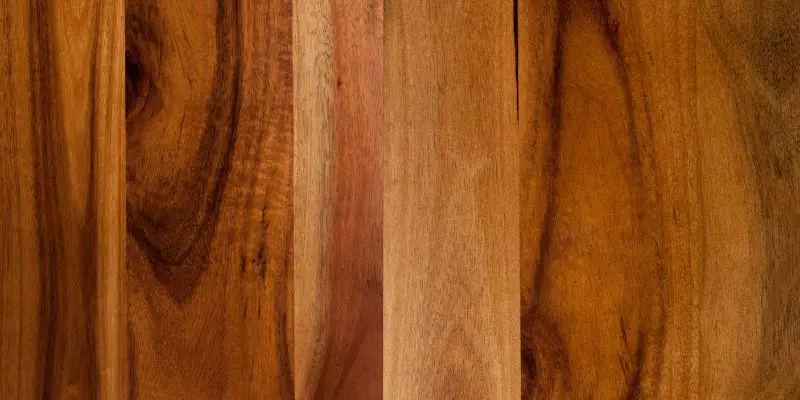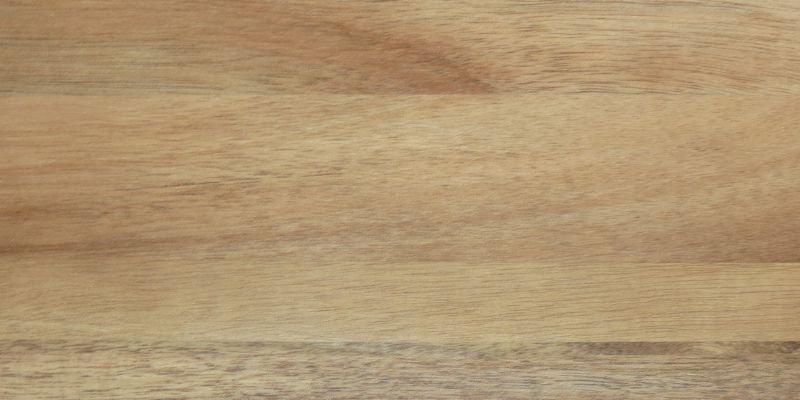Rubberwood is lighter in color and less durable than Acacia. Rubberwood is often used for furniture and other household items, while Acacia is preferred for outdoor furniture and flooring due to its strength and resilience.
Both types of wood are sustainable choices, making them environmentally friendly options for construction and decor. In recent years, there has been a growing interest in using sustainable materials for construction and interior design. One such material that has gained popularity is rubberwood.
Rubberwood is a hardwood that is harvested from rubber trees, primarily found in Southeast Asia. It is known for its light color and low cost, making it a budget-friendly option for furniture and other household items. On the other hand, Acacia wood is another sustainable option that has gained recognition in the industry. Like rubberwood, Acacia is a hardwood that is harvested from Acacia trees found in various regions, including Africa, Asia, and Australia. One of the main differences between rubberwood and Acacia is their durability. Acacia is significantly more durable and resistant to wear and tear, making it ideal for outdoor furniture and flooring. In terms of appearance, rubberwood has a light and pale color, while Acacia offers a darker and richer tone. Both woods can be stained or treated to enhance their appearance, making them versatile options for different design schemes.
When it comes to sustainability, both rubberwood and Acacia are excellent choices. Rubberwood is harvested from rubber trees at the end of their latex production cycle, giving them a second life as timber. This process makes rubberwood a renewable and eco-friendly choice. Acacia, on the other hand, is fast-growing and abundant, making it a sustainable option as well. Both rubberwood and Acacia have their own unique characteristics and benefits. Rubberwood is a cost-effective option for indoor furniture and household items. Meanwhile, Acacia is a durable and resilient choice for outdoor use, such as furniture and flooring. Ultimately, the decision between rubberwood and Acacia depends on your specific needs and preferences.
What Is Rubberwood?
When it comes to wooden furniture, we often come across terms like rubberwood and acacia. In this article, we will focus on understanding what rubberwood is all about. Rubberwood, also known as parawood or Asian hardwood, is derived from the rubber tree, scientifically known as Hevea brasiliensis. Originally grown in the tropical regions of Southeast Asia, rubberwood has gained popularity in recent years due to its unique characteristics and sustainable sourcing.
Origin And Characteristics
Rubberwood originates from the rubber tree plantations found mainly in countries like Thailand, Malaysia, and Indonesia. These trees are primarily cultivated for the extraction of latex, which is used in the production of rubber products. However, once the trees complete their latex-producing lifespan, they are harvested for their highly versatile wood.
Rubberwood possesses a pale yellowish-brown hue, often resembling the appearance of oak. Its grain is generally straight, although it can occasionally have swirling patterns. This wood has a medium to coarse texture, which contributes to its warmth and elegance. Although classified as a hardwood, rubberwood is softer compared to other hardwood varieties, making it easier to work with and shape during the manufacturing process.

Advantages Of Rubberwood
Rubberwood offers several advantages that make it a popular choice for furniture production. Some of these advantages include:
- Durability: Despite being softer than other hardwoods, rubberwood is known for its high durability. When properly maintained, furniture made from rubberwood can have a long lifespan, making it a cost-effective option.
- Sustainability: One of the main reasons rubberwood is gaining popularity is its sustainability aspect. As rubber trees are primarily grown for their latex, utilizing their wood for furniture production ensures that the entire tree is utilized, minimizing waste and promoting environmental conservation.
- Appearance: Rubberwood has an attractive pale yellow-brown color with a natural grain pattern, similar to oak. It can easily be stained or painted to match different interior styles, providing flexibility in design options.
- Affordability: Rubberwood furniture is generally more affordable compared to furniture made from other hardwoods. This makes it an attractive choice for budget-conscious consumers without compromising on quality.
Disadvantages Of Rubberwood
While rubberwood has several advantages, it also has a few limitations to be aware of:
- Softness: The soft nature of rubberwood means it may not be ideal for heavy-duty use or areas with high foot traffic. It is more prone to dents and scratches compared to harder hardwood options.
- Vulnerable to moisture: Rubberwood is susceptible to water damage and moisture-related issues such as warping and cracking. Proper sealing and regular maintenance are essential to protect the wood from moisture.
- Proneness to fading: Over time, rubberwood furniture may experience fading, especially if exposed to direct sunlight. Protective measures like using blinds or applying UV-resistant finishes can help mitigate this issue.

What Is Acacia?
Acacia is a type of wood that is renowned for its exquisite beauty and durability. It is derived from the Acacia tree, which is native to several countries in Asia, Africa, and Australia. This hardwood is highly desirable in the furniture industry and is commonly used for crafting stunning pieces of indoor and outdoor furniture.
Origin And Characteristics
The origin of acacia can be traced back to different parts of the world. Its roots lie in regions like Africa, Asia, and Australia, where the Acacia tree thrives in diverse climates. Acacia wood is known for its unique grain patterns and rich amber to reddish-brown colors. It features a smooth texture, making it a delight to touch.
This hardwood is valued for its exceptional durability and resistance to wear and tear. The natural oils present in acacia wood contribute to its strength and make it highly resistant to rot, decay, and insects. Moreover, it has the added benefit of being moisture-wicking, which makes it suitable for both indoor and outdoor furniture.
Advantages Of Acacia
Acacia offers a multitude of advantages that make it a popular choice for furniture manufacturers and consumers alike:
- Stunning Aesthetics: Acacia’s beautiful grain patterns and warm colors lend an elegant and organic touch to any living space.
- Exceptional Durability: The natural oils present in acacia wood enhance its durability, ensuring that furniture made from this hardwood can withstand the test of time.
- Versatile: Acacia can be used to create a wide range of furniture styles, from traditional to contemporary, making it a versatile choice for interior decorators and homeowners.
- Moisture Resistance: Acacia’s moisture-wicking properties make it resistant to warping and cracking, making it ideal for outdoor furniture that is exposed to the elements.
- Sustainable Choice: Acacia is an environmentally friendly option as it can be harvested sustainably and regrows relatively quickly.
Disadvantages Of Acacia
While acacia wood boasts numerous benefits, it does have a few disadvantages to consider:
- Higher Cost: Acacia wood tends to be more expensive than other types of wood due to its superior durability and aesthetic appeal.
- Prone to Scratches: Despite its durability, acacia wood is susceptible to scratches and dents, requiring proper care and maintenance to preserve its appearance.
- Sensitivity to Moisture: Although acacia wood has moisture resistance, it is still sensitive to excessive humidity or prolonged exposure to water, which can cause swelling or warping.
Despite these drawbacks, acacia remains a popular choice for those seeking high-quality and visually captivating furniture.
Comparison: Rubberwood Vs Acacia
Rubberwood and Acacia are two popular choices for furniture and flooring. Rubberwood is known for its durability and eco-friendliness, while Acacia offers a unique grain pattern and natural resistance to moisture. Choose based on your preference for sustainability or aesthetic appeal.
Rubberwood and Acacia are two popular types of wood used in furniture and other woodworking projects. While they have similarities, they also have distinct differences that make them suitable for different purposes. In this article, we will compare Rubberwood and Acacia in terms of price and availability, durability and strength, grain and appearance, sustainability, and suitability for different purposes.
Price And Availability
When it comes to price and availability, Rubberwood and Acacia have some differences. Rubberwood, also known as parawood, is a widely available and relatively inexpensive type of wood. It is derived from rubber trees that have reached the end of their latex-producing life cycle, making it an eco-friendly choice. On the other hand, Acacia wood is known for its durability and unique grains, which can affect its price. Acacia wood is generally more expensive than Rubberwood and may not be as readily available in certain regions. However, its popularity has been increasing, and it can still be found in many furniture stores.
Durability And Strength
When it comes to durability and strength, both Rubberwood and Acacia have their merits. Rubberwood is a sturdy and durable wood, known for its resistance to warping and cracking. It is a dense and robust hardwood that can withstand everyday wear and tear, making it suitable for furniture pieces that need to withstand regular use. Acacia wood, on the other hand, is renowned for its exceptional strength and hardness. It is a durable hardwood that can withstand heavy use and is less prone to scratching or denting than Rubberwood. Therefore, if you prioritize strength and durability, Acacia wood could be the better choice.
Grain And Appearance
The grain and appearance of the wood are essential factors to consider when choosing between Rubberwood and Acacia. Rubberwood has a light, pale yellow color with a straight grain pattern. It is a versatile wood that can be easily stained or painted to achieve different finishes. Acacia wood, on the other hand, offers a wide range of natural colors and unique grain patterns. Its grains can vary from straight to wavy and even interlocking, giving it a more distinctive and eye-catching appearance. If you value a more natural and visually appealing look, Acacia wood might be the preferred choice.
Sustainability
Sustainability is an important consideration in today’s environmentally conscious world. Rubberwood is highly sustainable as it is derived from rubber trees that have ceased latex production. By using Rubberwood for furniture and woodworking projects, you contribute to the recycling and repurposing of this resource. Acacia wood, while not as sustainable as Rubberwood, can still be considered a relatively eco-friendly choice. It is often sourced from responsibly managed plantations, ensuring the replanting of trees to maintain the ecosystem balance. If sustainability is a priority for you, Rubberwood is the more environmentally friendly option.
Suitability For Different Purposes
Both Rubberwood and Acacia have their strengths and weaknesses when it comes to suitability for different purposes. Rubberwood is commonly used in furniture production, cabinetry, and flooring due to its durability and affordability. It can also be easily painted or stained to achieve different aesthetics. Acacia wood, on the other hand, is favored for its unique grains and natural beauty, making it ideal for creating statement pieces such as dining tables, countertops, and decorative objects. It is also suitable for outdoor furniture due to its natural resistance to decay and insect infestation.
In conclusion, both Rubberwood and Acacia have their unique characteristics that make them suitable for various woodworking projects. While Rubberwood offers affordability, durability, and sustainability, Acacia wood stands out with its strength, distinctive grain patterns, and natural beauty. Consider your specific requirements and preferences to choose between these two types of wood, ensuring that your choice matches the intended purpose and aesthetics of your project.
Frequently Asked Questions Of Rubberwood Vs Acacia
Is Rubberwood Good Quality?
Yes, rubberwood is known for its good quality.
What Are The Disadvantages Of Rubber Wood?
Rubber wood has some disadvantages, such as being prone to warping and water damage. It is not as durable as other hardwoods and can scratch easily. Additionally, it has a tendency to darken over time. However, proper care and maintenance can help minimize these drawbacks.
What Are The Disadvantages Of Acacia Wood?
Acacia wood has some disadvantages, such as being prone to scratches and dents, requiring regular maintenance to keep its appearance, and being susceptible to moisture and weathering.
Is Hevea Or Acacia Better?
Hevea and acacia both have their advantages, but it depends on your specific needs. Hevea is known for its durability and water resistance, while acacia offers a unique aesthetic and is more affordable. Ultimately, the choice comes down to personal preference and the desired characteristics for your specific application.
Conclusion
When deciding between rubberwood and acacia, it is important to consider your specific needs and preferences. Rubberwood offers a renewable and eco-friendly option, while acacia boasts durability and a diverse range of colors. Ultimately, the choice comes down to your desired aesthetic, budget, and environmental impact.
Take your time to weigh the pros and cons before making a decision that aligns with your values.


